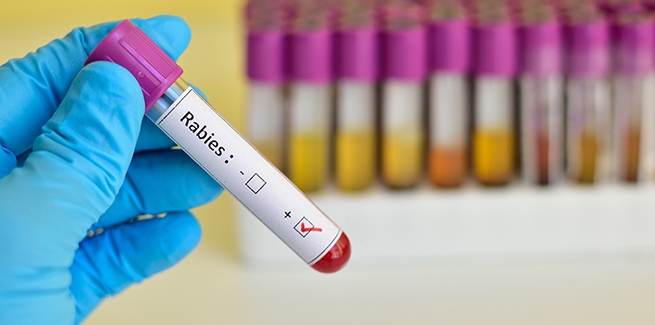Rabies vaccine could cure more than rabies

A new rabies study turned up some unexpected benefits.
From the vaccine, not the disease.
The rabies vaccine has a proven track record of preventing the disease in dogs, but a recent study, funded by Morris Animal Foundation and published in the journal Vaccine, indicates that the vaccine may have unintended positive effects on overall canine health. Specifically, an overall decrease in canine mortality rates from all causes.
Researchers analyzed data collected between 2012 and 2015 during an observational study of free-roaming pet dogs in an impoverished area of South Africa. Because the community is low income, pets don’t usually receive veterinary care. However, the South African government regularly provides free rabies vaccinations for pet dogs, even going door to door to administer them.
The researchers’ objective was to find out if there was any association between vaccination for rabies and overall mortality in dogs of all ages. They segregated the dogs by age group (0–3 months, 4–11 months, and 12 months and older).
The analysis showed that rabies vaccinations reduced the risk of death from any cause in all dogs, but young dogs (0–3 months old) got the biggest benefit—a 56% decrease in mortality. The effects were less pronounced as the age of the dog increased. Overall mortality decreased by 44% in dogs 4–11 months, and by 16% in dogs aged 12 months and older.
This is great news, but the catch is, the researchers don’t know why it happens. They do have some theories.
Lead researcher Darryn Knobel, BVSC, MSC, MRCVS, PHD professor of epidemiology and population health at AAHA-Accredited Ross University School of Veterinary Medicine in St. Kitts, said, “This [research] led us to propose that [the] rabies vaccine may have a nonspecific protective effect in dogs, perhaps through boosting the immune system to provide enhanced defense against other, unrelated diseases.”
Knobel is talking about nonspecific protective effects of vaccines, which are beneficial but unintended effects provided by some vaccines against nontargeted infections. For example, vaccines like the measles vaccine, oral polio vaccine, and the smallpox vaccine have been shown to reduce human mortality to a greater degree than can be explained by simply preventing the targeted infection.
Knobel noted that a similar phenomenon has been observed in children. It’s estimated that millions of child deaths in developing countries could be prevented each year if the nonspecific effects of vaccines were taken into consideration in immunization programs.
Knobel hopes the same may prove true for the rabies vaccine.
Rabies remains a significant global health threat. While the number of rabies-related human deaths in the United States has declined considerably over the last century, with only one to three reported per year, and a total of twenty-three reported cases in the last decade, it’s a much bigger problem in the rest of the world. According to the World Health Organization, rabies causes an estimated 55,000 human deaths each year, mostly in Asia and Africa.
In up to 99% of cases, domestic dogs are responsible for transmitting the virus to humans.
Photo credit: © iStock/Jarun011



